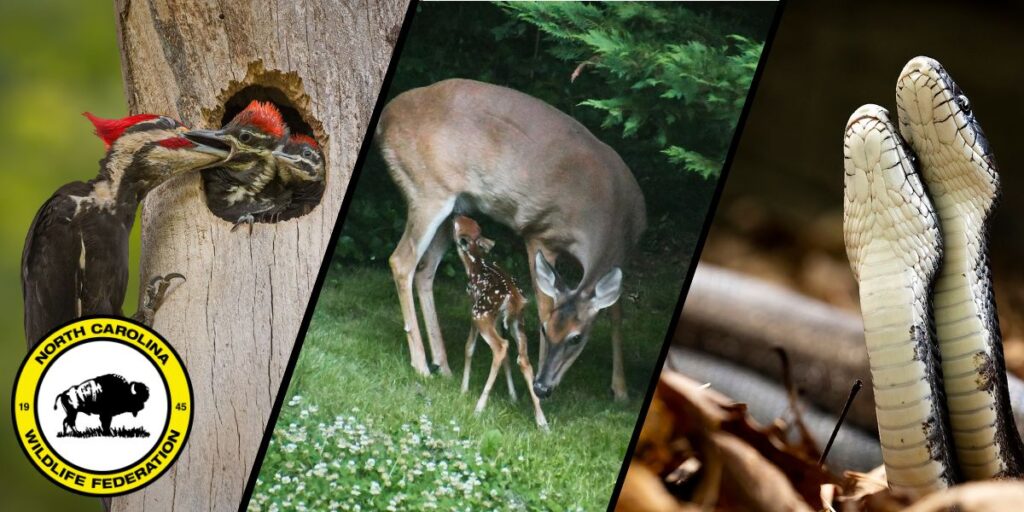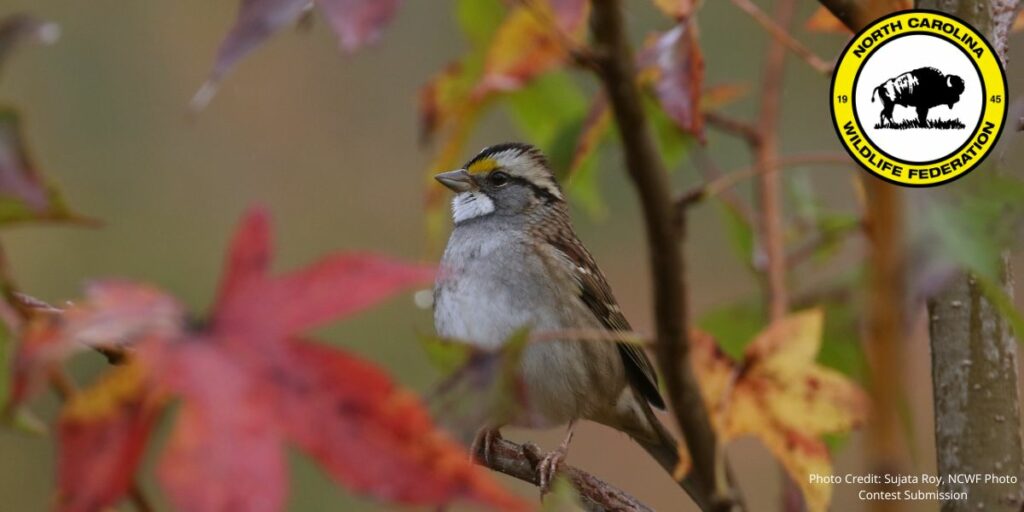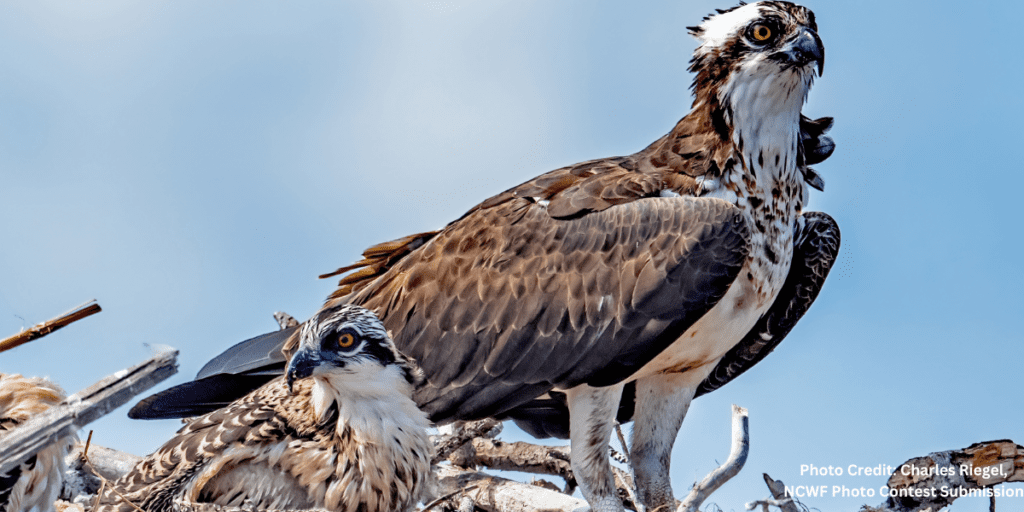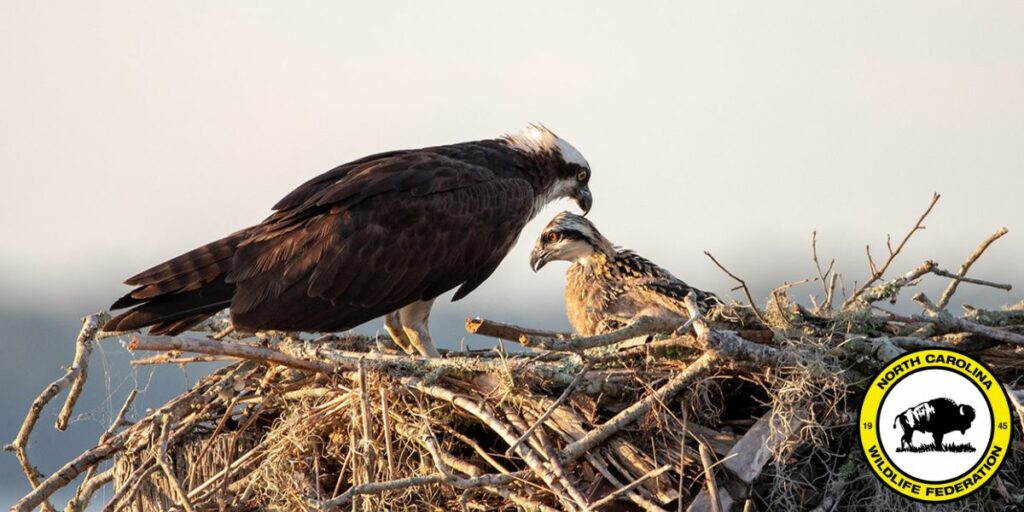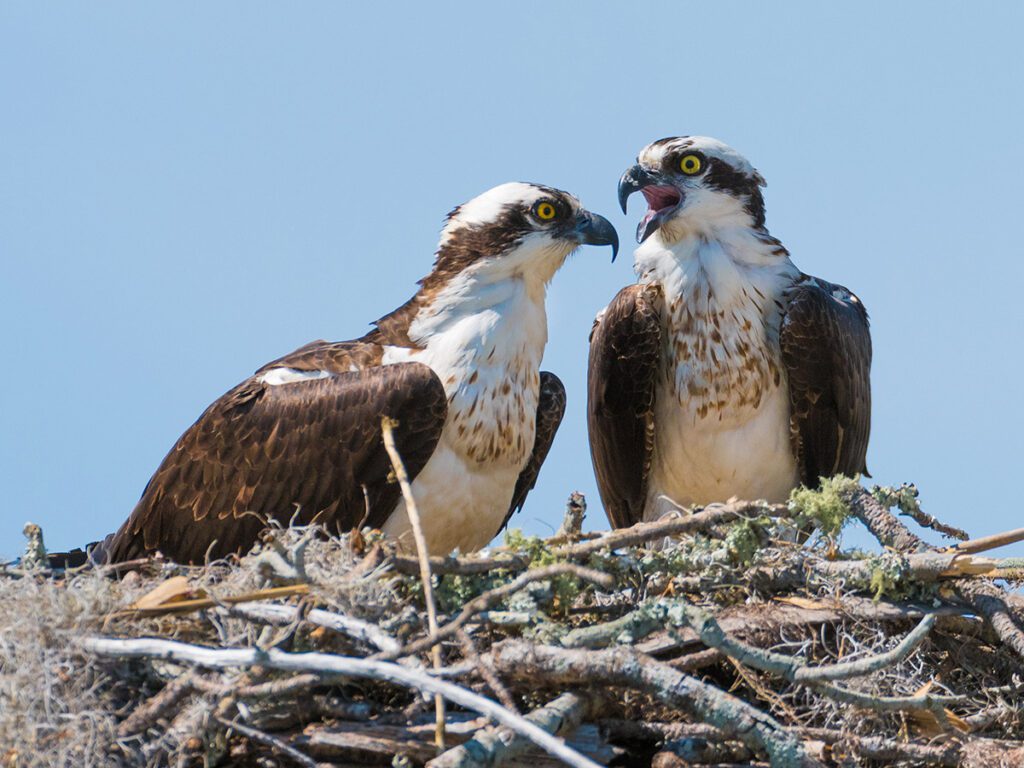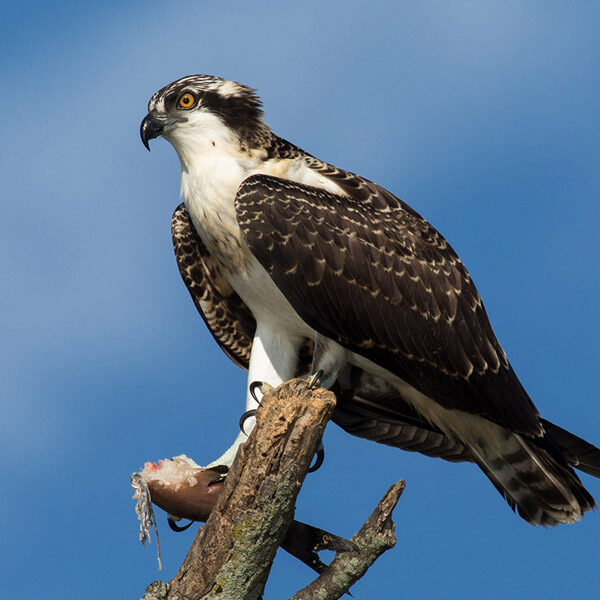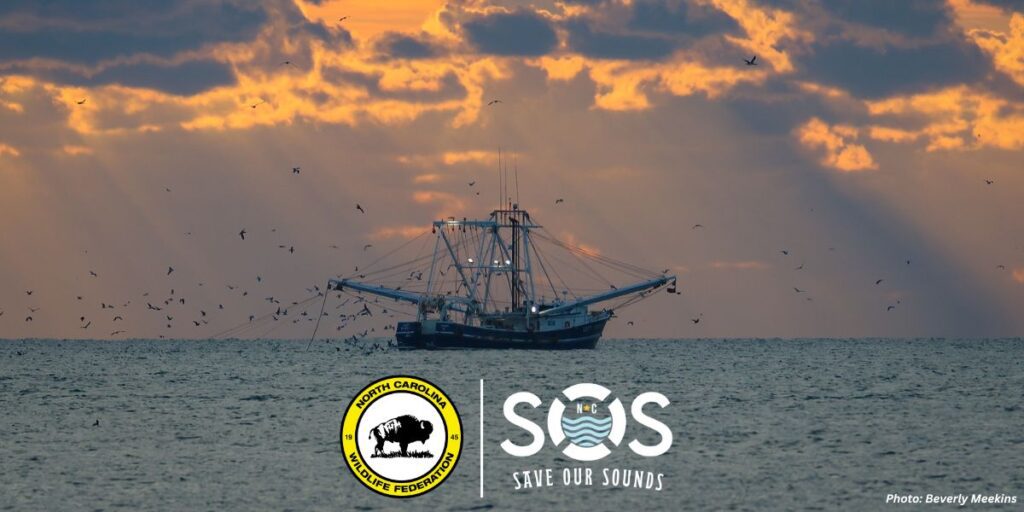Osprey Conservation
The Problem
Habitat Destruction Harms Osprey Population
Our streaming osprey and heron nesting cameras reached audiences across the globe with millions of views. Take a peek and help spread the word about this bird’s eye view of North Carolina wildlife in their natural habitats.
Ospreys are prevalent along the 225-mile long Catawba River running from western North Carolina down into South Carolina; however, this wasn’t always the case. In the early 1980s, indiscriminate use of chemicals weakened eggshells, compromising reproductive success and diminishing the osprey population.
Protective measures, such as the ban of the pesticide DDT, helped the water-dependent birds rebound. But continued destruction of their habitat may impact their future. For young to thrive and maintain their diet of freshly caught fish, ospreys need nesting opportunities in large open bodies of water.
Ospreys return to the same nest each year, but unfortunately, utility poles, boating navigational aids and industrial lights often become sites for osprey nests. Flights in and out of the nests are dangerous for the adult birds, putting the young ospreys at risk, and interfering with routine pole maintenance.
The Solution
Construction of Osprey Nesting Platforms
Over the last decade, NCWF and our Lake Norman Wildlife Conservationists chapter installed more than seven dozen nesting platforms in Lake James, Mountain Island Lake, Lake Wylie and Lake Norman reservoirs. A dozen platforms replaced old navigational markers whose nesting platforms were precarious and unsafe for eggs and chicks during heavy summer storms.
The 30-foot poles are adjacent to island shorelines in sites vetted for biological and navigational suitability, providing safe homes for ospreys and their broods. The nesting platforms’ unencumbered height attracts the birds while also protecting against predators like black snakes and raccoons.
Watch Osprey Live on Lake Norman
What We're Doing
Outcomes & Impact
The osprey family that inhabits the nest on our live stream web cam returns each spring to lay eggs and tend to their brood. They continue using the nest as a home in the fall before migrating to warmer climes for the winter, though they spend less time there since there are no eggs or baby birds to keep warm.
Recent News
Upcoming Events
How You Can Help
Join the Cause and Make an Impact
Help NCWF preserve wildlife and wild places for our children and future generations. Learn More.


